The ride up to the Fouta, the first mountains since Morocco, was a bit disappointing. It is indeed beautiful, but not as scenic as expected. I guess I had too high expectations and was thinking of another Atlas, Pyrénées or Alps mountain range with endless views. The jungle and greenery in Guinea make the place rather overwhelming.
I am now back onto the paved road and will have two days of pleasant ride until Mamou, through Pita and Dalaba. There is something about Africa that I feared before starting my trip: the “coupeurs de route”. It could be translated by highway bandits. They make a roadblock and rob the car passengers. For example, it makes those kind of news, on the Koundara-Labé road I just took. Some countries and regions are known for it, but Guinea seemed rather safe. It is the kind of uncommon event that one needs really bad luck to experience.
Of course, one would not want to cycle at night in those areas. Maimouna was robbed this way some months ago in a collective taxi from Conakry. That is why I cycle only during daytime and find a safe place to sleep early enough before the sunset. But I was just warned that a coupeur de route was arrested recently on the Labé – Mamou road, which I am departing for now. He was operating during the day with a weapon (a service weapon as he was a road policeman). Since the law is not respected anyway and officials (immigration, police) do what they want, there is after all not much difference between a bandit and a squad of men in uniforms extorting imaginary fines from drivers. What I didn’t expect is that the main road links between two major cities of a country are so empty that it is possible to cycle on the wrong side of the road for minutes. Which also means that sticking to a big road does not ensure safety at all.


It rained the two days I stayed in Labé and the sun is shining again today. The weather is absolutely not predictable, it is indeed solely upon God’s will if I have a dry day or not. The hilly road goes up and down among the greenery and even some pine trees, and is easily enjoyable. I decide to make a turn to the Kinkon waterfall instead of going straight to Pita. It is one of the major attractions of the Fouta Djalon but there is very little information about it. Helped by the GPS coordinates, I take a turn right before entering Pita, and follow a track that gets worse and worse.
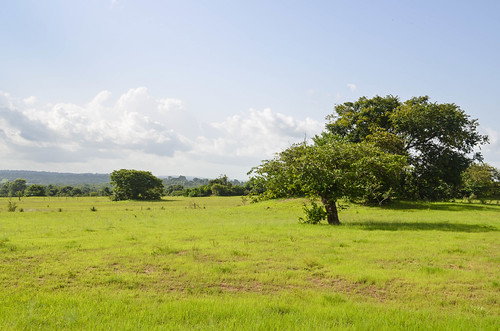

The road would be going into nowhere if I had not the lake appearing on OpenStreetMap. There are a few houses along, and kids playing outside. One very young kid shout at me “Sinois!” (“Chinese!“). Yes, for the first time in my life, I am called Chinese. The older brother seems to correct the kid, as he then shouts “Porto!“, which is the “correct” name for all White people here. The Chinese must be working on the Kinkon hydropower plant, so it must mean I am on the right track.
I know I am arrived when the track is blocked by the army. They ask for the ticket that is supposed to be obtained in Pita, but let me enter the “restricted area” with a small negotiable contribution. There is no difference between the official rule and the common practical experience.
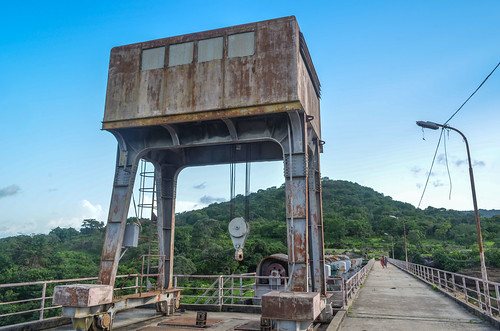
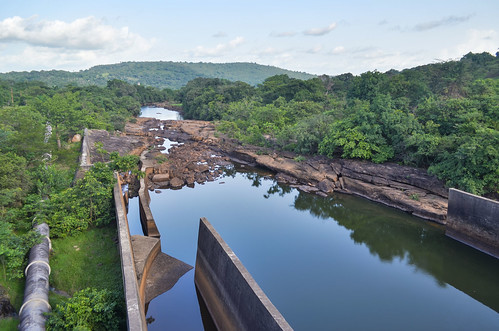
The Kinkon dam is the first dam of Guinea, built by the Chinese and inaugurated in 1966. While the 3MW hydropower plant is supposed to supply the regions of Labé, Pita, Dalaba and Mamou, it is said to have deteriorated very badly until an upgrade performed in 2006 that took the output to 3,4 MW. It is still just enough to provide occasional power supply in the local area, but there are other plans for a better future.
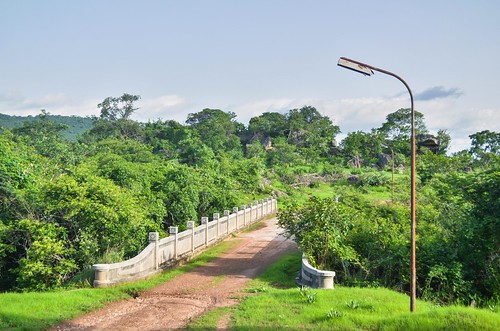
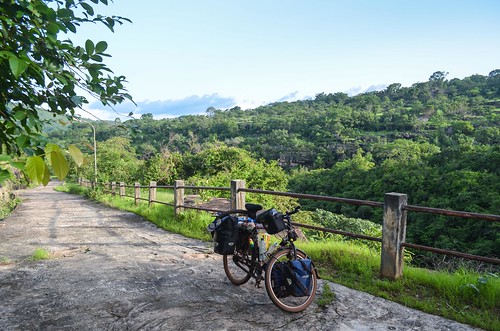
I miss the waterfall and cycle all the way downhill, on the concrete road that magically survived through time, unlike the rusty streetlights that border it, to the bottom of the head of the project. The one operator sends me back uphill.
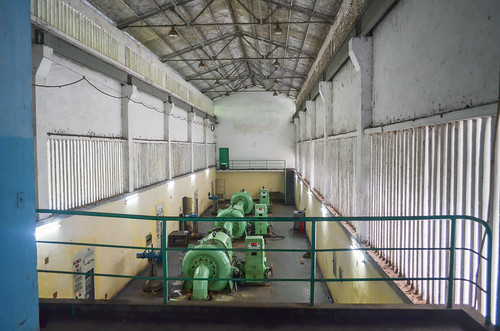
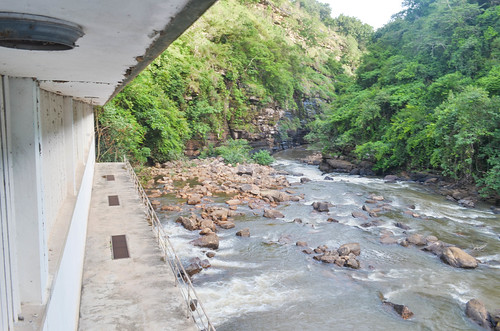
It is a very nice location and there is no one else to disturb me but the dog from the Chinese compound. Being in the narrow canyon is quite impressive.
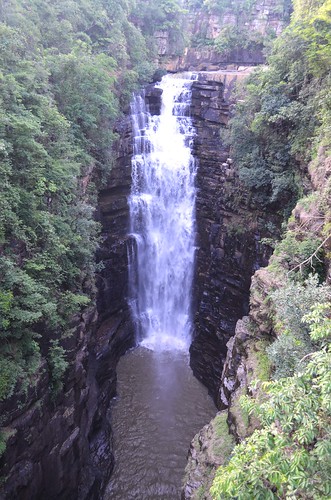

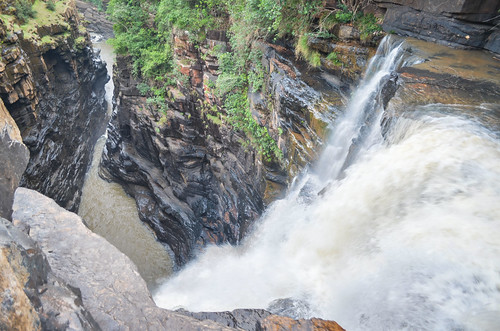
On my way back, the army guard speaks Krio to me: he is originally from Sierra Leone, my next country. Krio is the English creole spoken over there. It is the first time I am hearing it, and I am very confused: it sounds like a language I know but I can’t understand anything. Only a few words here and there. My brain is split between the feeling that it is English and the fact that I actually seized no meaning. It sounds close to American rap.
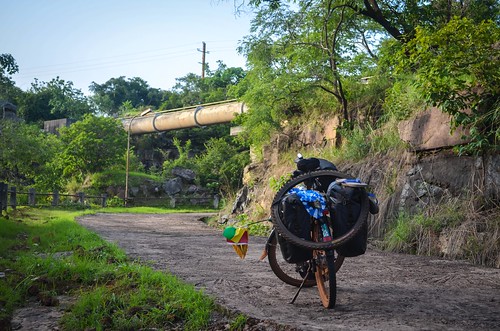
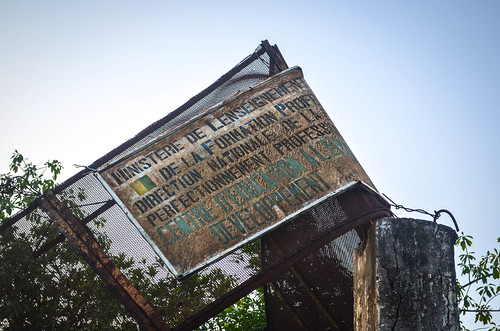
As usual, we become friends and exchange phone numbers and pictures with the guards that were asking for money just an hour ago. The kid that had called me Chinese is still here and he didn’t memorize the lesson of his brother. He calls me Chinese again. I have a few kilometers to do on dirt tracks that I barely follow, as I just need to find the asphalted road.
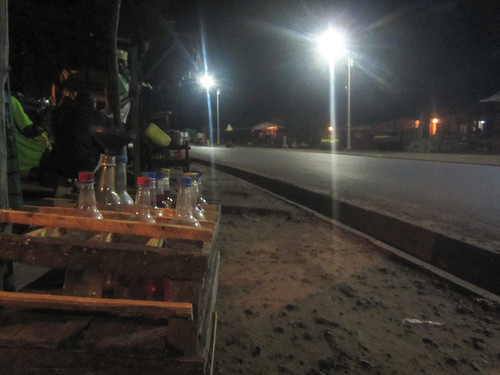
My excursion at the Kinkon waterfall makes me arrive in Pita at night. I check in a small hotel, where the electricity is down (for another reason this time), and avoid the night rain.
The section from Pita to Mamou is the one I find the most beautiful. It is like a little rollercoaster in the greenery of the Fouta Djalon, always well paved and offering often nice points of view.
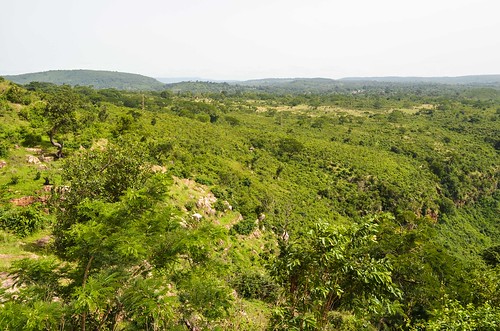

The colorful road provides mangoes and cliffs right on the side. It has a feeling of hill stations in North India.
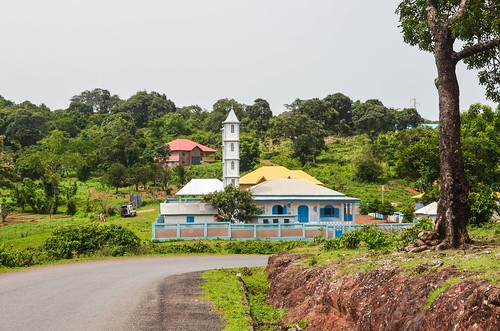
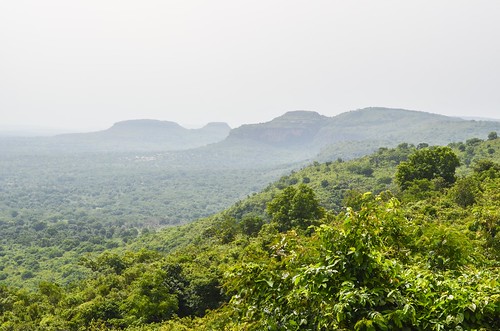
Like in many hilly places where the price of gasoline is significant in the life of people, the motorbike drivers shut down their engines during the downhill runs. It makes them fast and dangerous; I don’t hear them coming if they forget to honk. Even more dangerous, some taxis also turn their engines off …
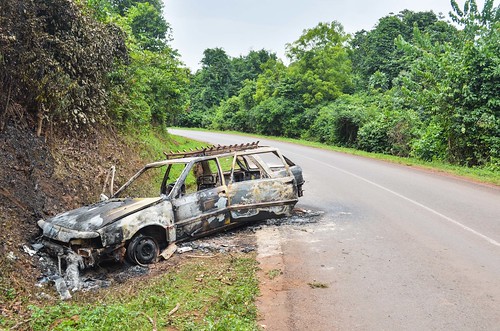

In between Pita and Mamou lies Dalaba, a town 1200 m high, that is said to have seen snow once upon a time …

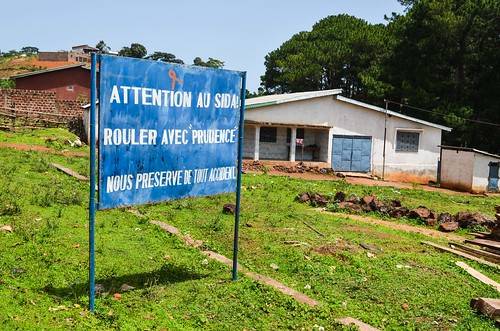
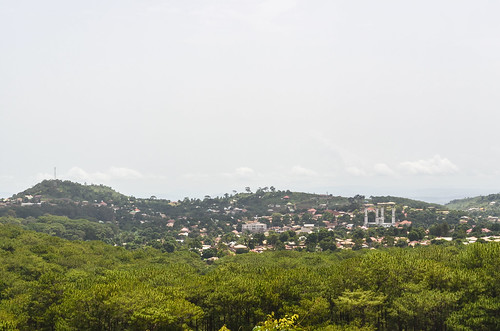
Nothing special happens until Mamou, which allows me to complete 120 km during the day with 1300 m of vertical climb. It is just beautiful.

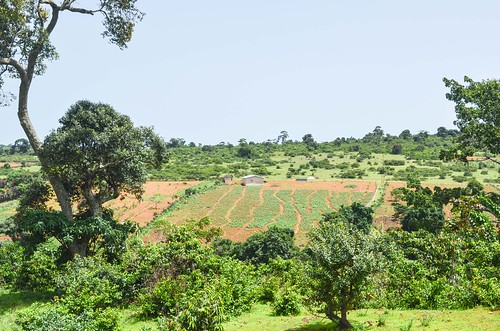
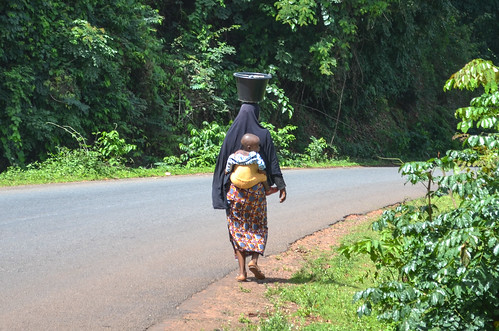


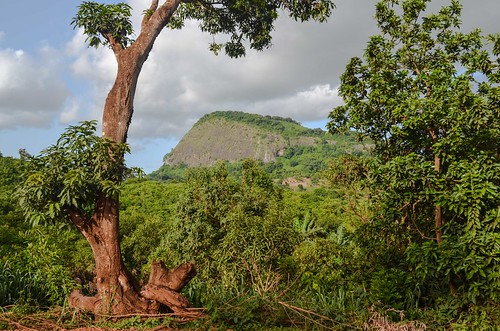
The arrival into Mamou is dusty with traffic suddenly picking up. When I enquire the prices at the first hotels, I am surprised their room prices are aligned at 250 000 GNF. This is 10 times the prices they should be. As I struggle to find a “normal” place at a decent price, I ask for the reason of those suspicious prices. Mamou is a major crossroads town, between the Fouta Djalon, Conakry, the Guinée Forestière and Sierra Leone, but it has nothing interesting in itself. The secret is that it has a fair amount of UNICEF and Peace Corps, and all the prices are raised up. Indeed, I realize that there are too many brand new Toyotas showing logos of international help and food programs.
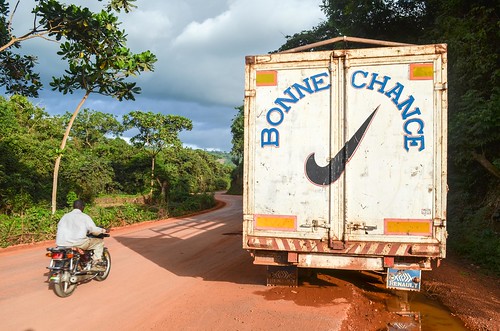
I break another spoke just when I find the only guesthouse in town at a normal price (6€), although this is pretty high for a basic room with bed bugs, public electricity (which stops at midnight), and a bucket of water (and the Lebanese owners are renovating it to soon raise their prices). My legs are sore and I am exhausted after a long day that is ending on this unhappy note.
Today I got fed up of being called hundred times by nearly everyone who saw me (and along 120 km, that makes quite a lot of people). I am called just for the sake of being called. Kids and adults will shout “Porto!“, “tourist!“, “heyyyyyyy” and make sounds until I acknowledge their presence. I usually reply “Hi” or anything, but today was too much. I felt like cycling in an arena in the middle of a circus ring. The worst is the way they make “calling noises”, they hiss “ssssssssst!” and make loud lips smacks. I can’t describe this sound, it’s a kind of kissing noise one would call kittens with. It is annoying to hear and horrible to be called with, making me feel that whistling is a courteous way to call a stranger. Yet, those noises are the common way to catch someone’s attention. And I can’t just close the car window and drive faster.
I got fed up also with the cars and trucks who drive and overtake as if they were dying in the evening anyway. Or as if they would get fined for using their brakes. As a result, the traffic rules can be summarized with “Honk at every turn and maintain full speed”. And that severely breaks the good feeling of riding in the hills.
The only fun is to watch, at night, the surrounding hills lighting on and off at the same time with the power failures.





Leave a Reply